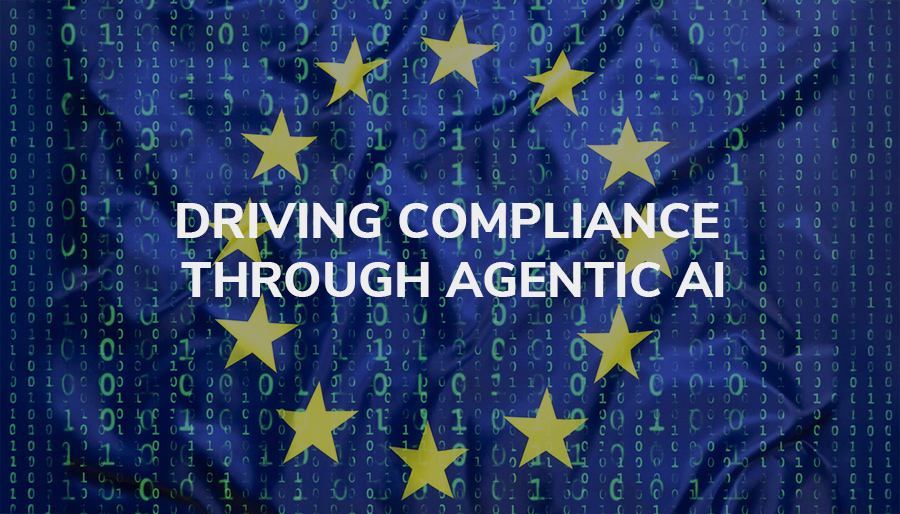Understanding the Shift: From Generative to Agentic AI
The landscape of AI compliance is evolving fast with the EU’s AI Act emphasizing that risk management, transparency, and accountability have become non-negotiable pillars. While the spotlight is mainly on Generative AI, a new breed called Agentic AI is emerging as a game changer by not just assisting but acting autonomously, learning, and adapting within complex ecosystems.
Unlike traditional AI models that simply generate outputs or respond, Agentic AI operates independently. It pursues goals, orchestrates tasks across multiple AI modules, and interacts dynamically with various data sources and external applications — effectively reshaping the way compliance is approached.
What Exactly Is Agentic AI and Why Should It Matter?
At its core, Agentic AI differs from monolithic generative models as it:
- Pursues defined goals rather than just outputting responses
- Continuously learns and adapts its strategies over time
- Executes actions across digital and physical realms
This empowers businesses to optimize workflows in a way that no static AI system can, but it also introduces a fresh set of risks and complexities that compliance frameworks weren’t built to handle.
Risks on a New Level
As these AI agents become more independent and complex, risk factors expand dramatically:
| Risk | Description |
|---|---|
| Emergent Behavior | Agentic AI adapts through interactions, sometimes creating unexpected results beyond initial predictions, making fixed risk assessments inadequate. |
| External Integration Vulnerability | Because agentic systems connect to third-party tools and external APIs autonomously, weak links in these can expose the entire ecosystem to security breaches. |
| Accountability Challenges | With countless micro-decisions happening in real-time, it’s difficult to trace the exact reasoning behind outcomes, complicating transparency and audit processes. |
The AI Act: A New Lens for Agentic AI Compliance
The EU AI Act sets the groundwork, but applying it to the dynamic nature of Agentic AI demands rethinking in these areas:
1. Continuous Risk Management
Risk isn’t a “check-the-box” effort anymore. It demands real-time oversight that monitors how the AI evolves beyond its initial deployment, acknowledges system adaptability, and manages risks across the entire operational ecosystem.
2. Embedded Human Oversight
Traditional human approval processes are too slow for agentic systems. Dynamic guardrails, real-time interventions, and escalation protocols need to be baked into operations — making human oversight a constant, collaborative effort through the AI lifetime.
3. Transparency in Motion
Single, upfront disclosures won’t cut it. Transparency must reflect ongoing insight into the AI’s actions, highlighting key influences behind decisions, even if the entire logic is complex.
4. Living Documentation
Keeping compliance records up to date with evolving system behavior is vital. This means documenting decision-making processes with version tracking and audit-friendly logs rather than simple output archives.
Practical Steps to Govern Agentic AI
Making compliance real requires both technical innovation and organizational reshaping. Key priorities include:
- Shared Risk Assessment: Providers detect emerging risks while users monitor real-world impacts, creating continuous feedback loops.
- Real-time Traceability: Systems need dashboards, unique IDs, and activity logs to explain not just outcomes but decision paths.
- Scalable Oversight: Combine automated technical safeguards with empowered human agents who intervene responsibly and quickly when needed.
How Does This Connect to Logistics?
With logistics increasingly dependent on AI-driven planning and optimization, Agentic AI can radically improve cargo routing, shipment tracking, and inventory management. However, ensuring compliance with evolving AI regulations ensures smoother, more secure operations — crucial when moving bulky freight or sensitive shipments globally.
Companies who navigate these new compliance frameworks effectively stand to gain a competitive edge by deploying autonomous logistics solutions that are both innovative and trustworthy.
Why Real Experience Trumps Even the Best Reviews
While regulations and expert feedback offer valuable guidance, nothing beats firsthand experience when choosing transportation and cargo solutions in this fast-changing AI era. The transparency and extensive choices available on platforms like GetTransport.com allow users to make informed decisions without overspending or facing unpleasant surprises.
The convenience and affordability of services that range from office relocations to bulky freight shipment let businesses and individuals tap into reliable transport solutions worldwide — all while keeping compliance and logistics efficiency top of mind.
Book your Ride at GetTransport.com and enjoy seamless, cost-effective cargo transportation tailored to your needs.
Wrapping Up
The EU’s AI Act reinforces essential principles like risk management, transparency, and oversight, but the advent of Agentic AI calls for continuous, adaptive governance that can keep pace with autonomous systems evolving in real-time. This shift poses new challenges but also opens doors for more sophisticated, trustworthy AI applications in logistics and beyond.
By understanding these dynamics, companies can better harness Agentic AI’s capabilities to optimize freight and cargo operations while staying compliant. GetTransport.com exemplifies how embracing technology and transparency in logistics can simplify shipping, dispatch, haulage, and relocation — whether moving parcels, pallets, vehicles, or bulky items globally. Combining innovation with responsibility has never been more critical in today’s interconnected world.

